Just picture it: you snag a blueberry off of a bush and the juice leaks out between your fingers. The skin is still warm from the sun as you pop the plump, candy-sweet berry into your mouth.
Now, forget it. Sorry, not going to happen for you if you have soil with the wrong pH in your garden.
Heartbreaking, right?

We link to vendors to help you find relevant products. If you buy from one of our links, we may earn a commission.
Acidic soil can be a pain when it comes to growing veggies such as cabbage, kale, and peas. But it’s a blessing if you’re interested in raising azaleas or blueberries.
For gardeners in much of western North America, the slightly alkaline earth can make growing blueberries a challenge.
Even people in areas with more acidic earth, like the Pacific Northwest and New England, might find that their ground isn’t quite right for growing these incredible fruits.
Not to worry. There are ways to adjust your soil so you can enjoy all of the plants you want to have around. So don’t give up on growing your own blueberries.
We’re going to go over the following to help you make it happen:
What You’ll Learn
Blueberries have evolved to grow in acidic soil. A pH of 4.0 to 5.3 is about right.
While you can nurture blueberries outside of this range, they’ll never be as healthy and productive as they will in soil with the correct pH.
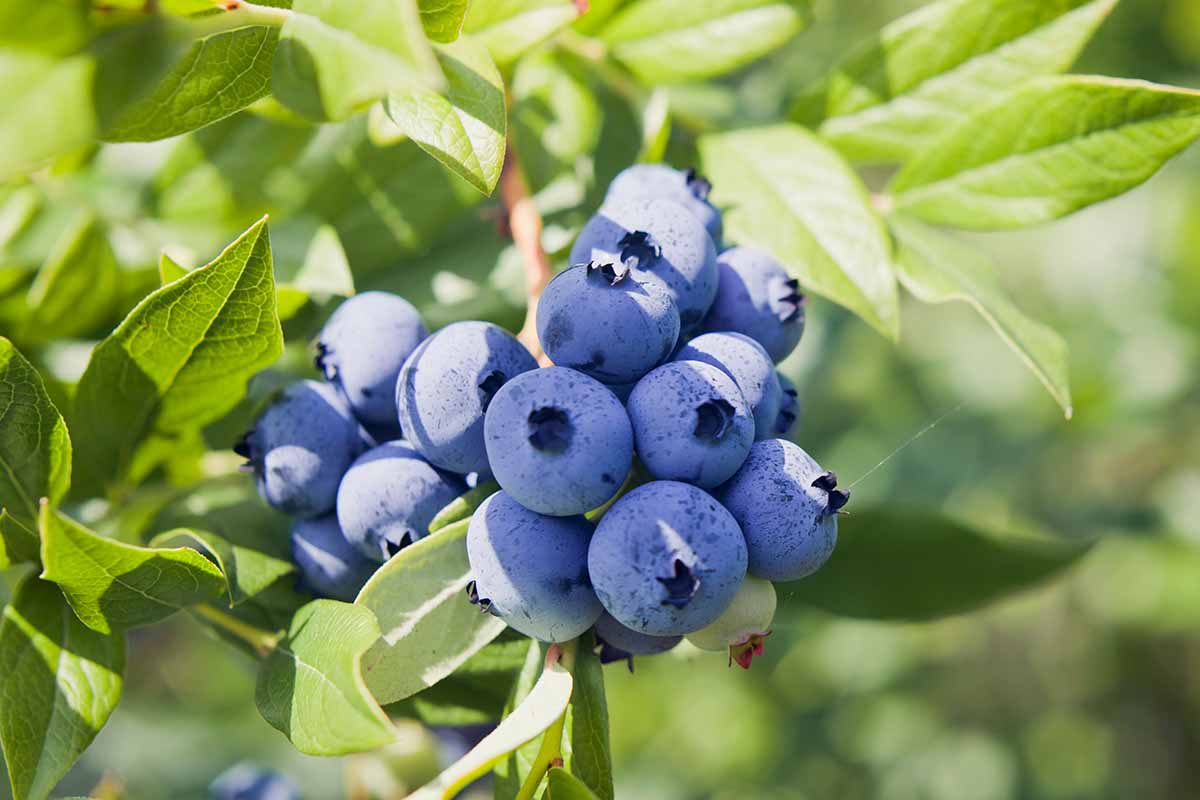
Those who live in areas that experience heavy rain tend to have acidic soils because the alkaline properties wash out over time. The Northeast and the Pacific Northwest are good examples of this.
In drier regions like the West, the earth tends to be more alkaline.
If you live somewhere with earth that is outside of the ideal range, you don’t have to abandon all of your blueberry dreams.
You can fix the earth, but to do that, first we need to understand why blueberries need an acidic pH.
Why Do Blueberries Need Acidic Soil?
To start, pH is a measurement of the amount of hydrogen in the water held in the ground. The greater the concentration of hydrogen ions, the lower the pH and the more acidic it is.
Blueberry plants use up a ton of iron as they develop. Soil with a lower pH allows bacterial and fungal organisms to reproduce and excrete minerals that the developing plants need.
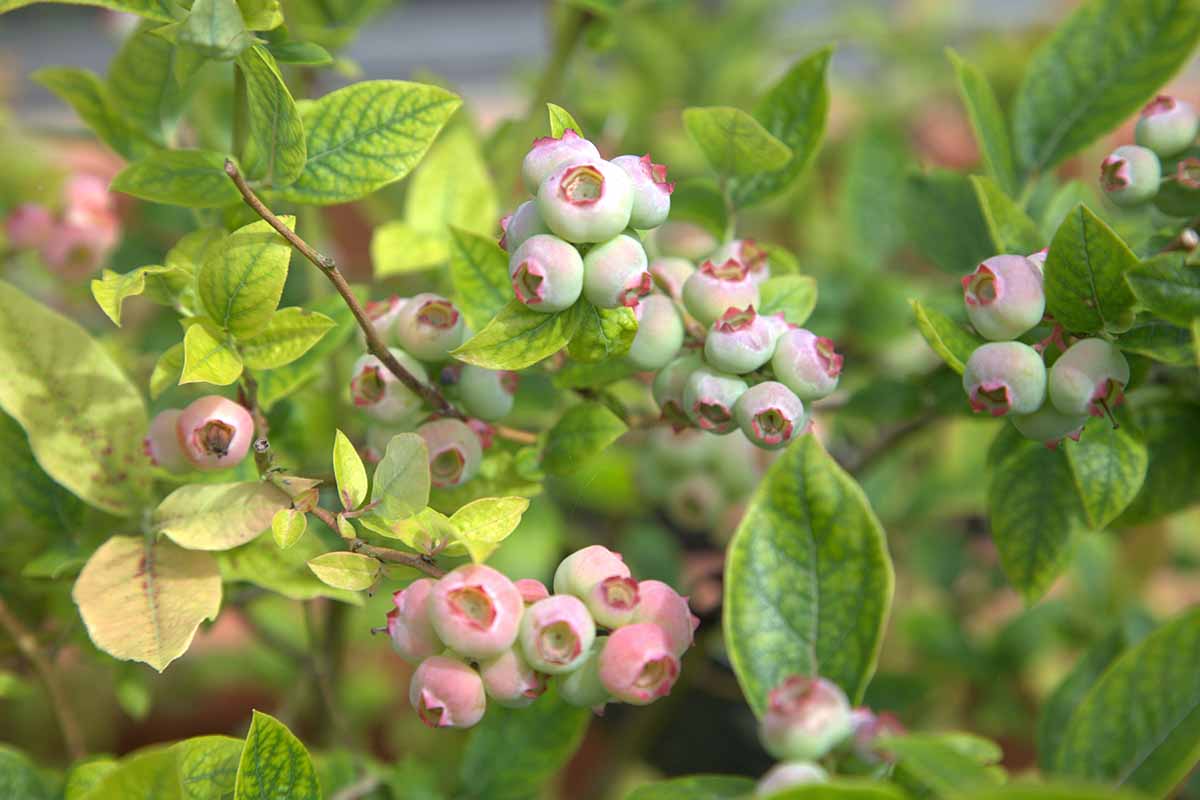
Acidic earth also allows phosphorus to bind with iron or aluminum, while in an alkaline environment, phosphorus binds with calcium. Plants have limited access to zinc and iron in alkaline soil.
In soil that’s too alkaline, blueberry leaves will turn yellow with green veins as the plant suffers from iron chlorosis.
Adding iron to the ground might help your plant recover a little, but a better, longer-term solution is to alter the pH of your earth to make it just right.
Selecting the Right Product
There are all kinds of myths and tales out there about how to alter the pH.
To begin, I’ll tell you right now that coffee grounds aren’t the way to go. They won’t alter the pH much, and the results won’t stick long-term. Same goes for pine needles.
Peat moss is a little better at altering pH but, again, the results don’t last. Plus, peat moss has its own problems.
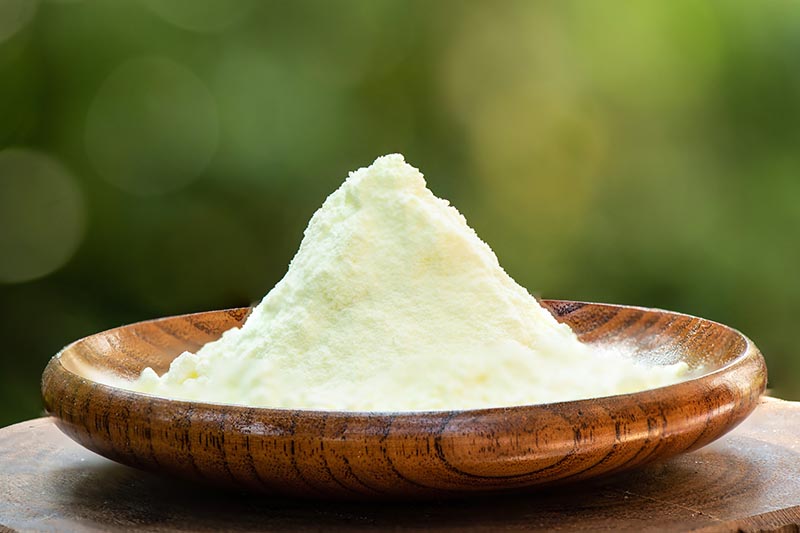
The most long-term and affordable solution for home growers is to use elemental sulfur.
It takes at least a few months to lower the pH using this type of sulfur, but it is quick, efficient, cost-effective, and can alter the soil more dramatically than something like nitrogen fertilizer.
When you add elemental sulfur, bacteria goes to work converting it to sulfate, and this lowers the pH.
You can also use ferrous sulfate, but it costs more. If you only need to adjust the pH value by 0.1 to 0.3, you can use nitrogen fertilizer.
Aluminum sulfate has negative environmental consequences, so don’t use it.

Something like Soil Mender elemental sulfur works great. A four-pound bag is available at Amazon.
Test the Soil
Don’t even think about planting blueberries without doing a soil test first.
Some plants are more adaptable than others, but blueberries are picky about pH. Unless you’re planting just one or two bushes in a small area, test multiple parts of your property.
One spot in your yard might be lower, allowing water to collect. Other areas might be higher, and water moves through, leaching out elements.
It’s also vital that you know what texture your earth has. Amending heavy clay requires a totally different approach to amending sand.
Sandy soil leaches nutrients more quickly than clay, which takes a long time due to its slow-draining nature. You’ll need to amend the ground much more frequently if you have sandy soil.
Limestone contains lots of alkaline minerals that neutralize the things we use to alter pH to make it more acidic, while granite bedrock is more neutral.
You’ll need to use more product to amend soil with heavy limestone than earth with a higher portion of granite.
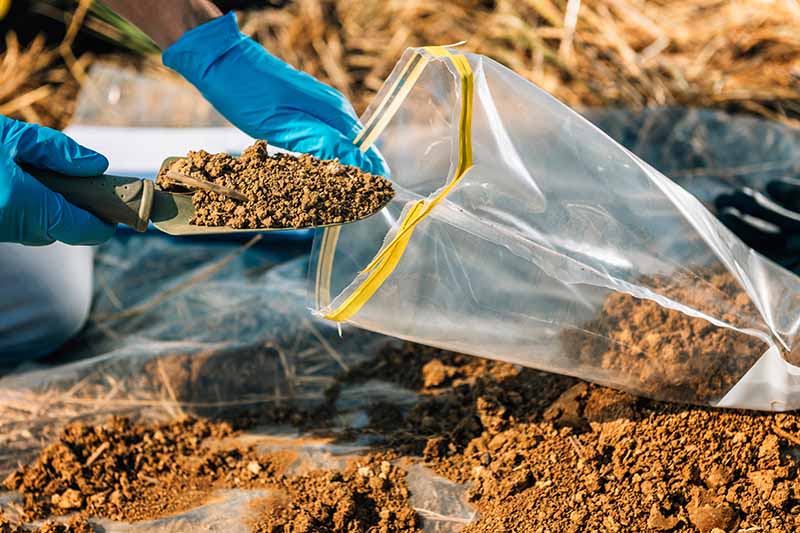
Doing a soil test is the only way to be sure of what you’re working with and what your starting pH is. It’s possible to find test kitss available for purchase online that will provide this info, but I’d suggest testing through your local extension.
They can provide more detailed information, and they’ll probably be able to tell you, broadly speaking, about what kind of earth you have in your region as well.
When to Apply Sulfur
You should start to apply sulfur at least six months to a year in advance of planting. Timing depends on how much you need to adjust the soil.
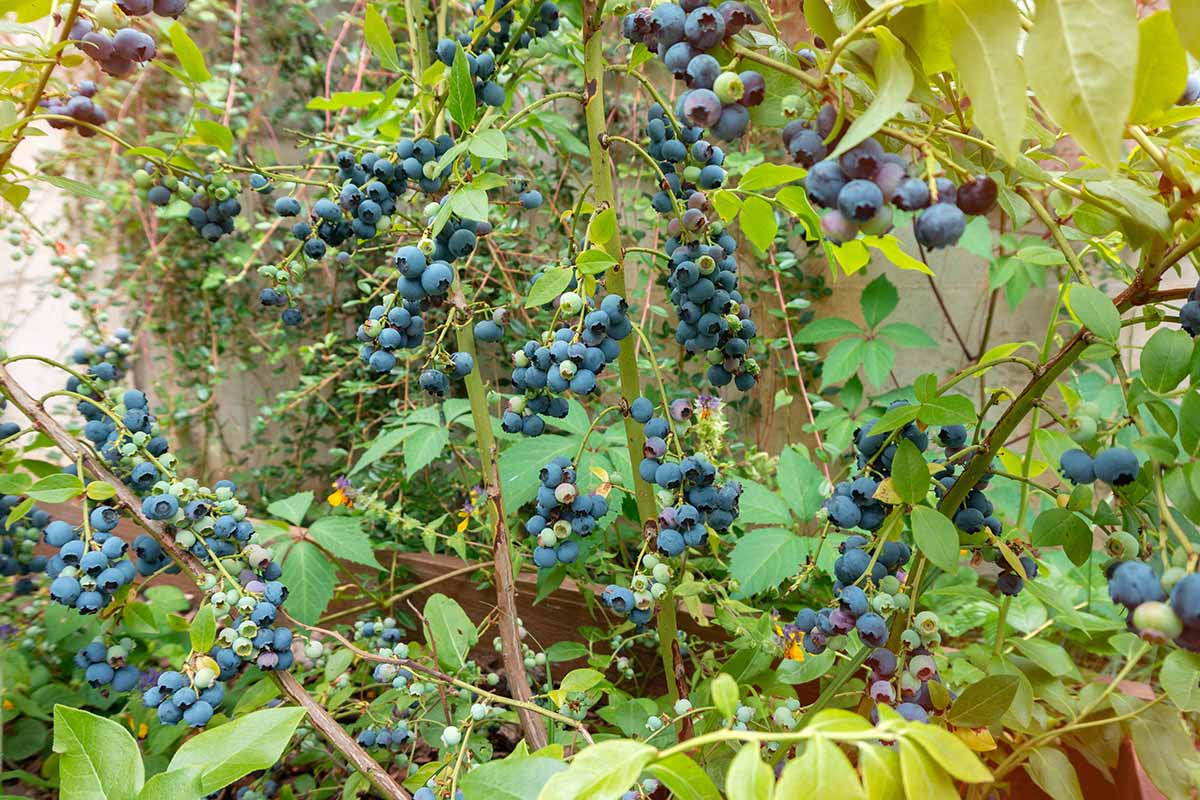
If the pH value of your ground sits somewhere between 5.4 to 6.0, you’ll need about six months to adjust it.
A measure of 6.0 to 6.5 will need about a year. Anything above 6.5 and you’re better off planting in a raised bed filled with acidic soil or finding a different species to grow.
Having said that, you should ideally make the change over the course of a year or two in order to improve the stability of the new pH.
Not all of us have that kind of time, of course, but spreading applications out over a longer period, rather than applying the sulfur all at once, is best because the soil is more likely to stay at the new pH level longer.
If you’re in a hurry, treat in the fall and plant in the spring.
It’s far, far easier to change the pH before planting. Once your plants are in the ground, the job is much more difficult because you risk damaging the roots when you try to really work the sulfur in.
Tips for Applying Sulfur
If you have extremely sandy or heavy clay soil, you need to work in lots of well-rotted compost.
Not only will this improve drainage and water retention, but it will make your efforts last longer. If you decide to alter your ground this way, test again a few months after you have worked in the compost.
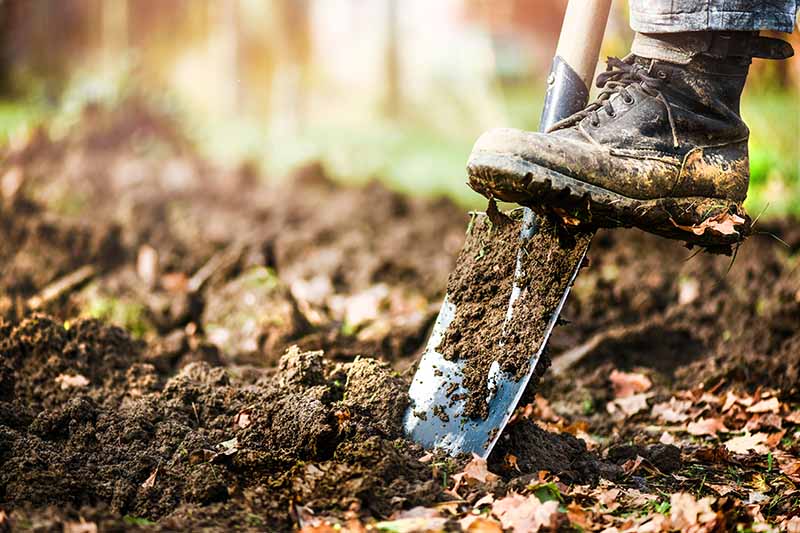
When you work elemental sulfur into the soil, Thiobacillius species go to work oxidizing the sulfur to make sulfuric acid. This reduces the pH and, as you can probably imagine, it takes time for this process to take place.
Now, get out your test results, and let’s start our work.
Each treatment should reduce the pH around one point, depending on the makeup of your soil, so if you need to alter the pH by two points, you’ll need to apply two treatments at a minimum.
If your earth is between 40 and 50 percent clay, you want to add approximately four to five pounds of elemental sulfur per every 100 square feet of soil.
If it’s 20 to 40 percent clay, reduce the amount to two to four pounds.
If it’s on the sandy end of things, with less than 20 percent clay, you only need one to two pounds.
But remember, it will leach out more quickly, so you’ll probably need to space applications out over a longer period and apply more treatments than with clay.
Work the sulfur in well to at least eight inches deep and water it in. In six months, test the soil again. You’ll most likely need to add another treatment.
Amending the Soil When Plants Are Present
If your plants are already in place, dig a four-inch-wide or larger hole a foot deep in four to eight spots around the dripline of each plant.
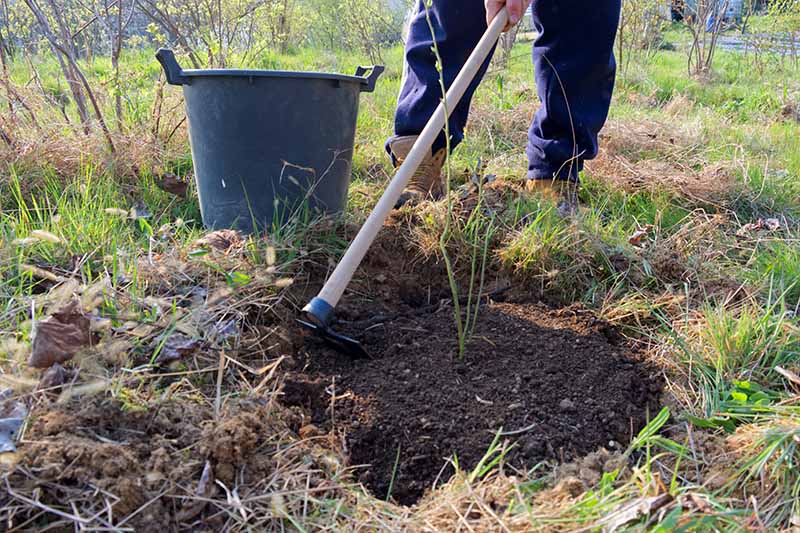
Put two tablespoons of chelated iron in each hole and fill it back up. Keep the soil watered well.
This will give the plants pockets of access to the iron it needs to survive, though it doesn’t alter the pH of the soil. Still, it enables acid-loving plants to thrive.
Repeat this each year in the spring.
To grab five or 55 gallons of Biomin Iron, visit Arbico Organics.
Maintenance
Once you change the pH of the soil in your blueberry patch, you’ll have to maintain it. This isn’t just a one-and-done sort of situation.
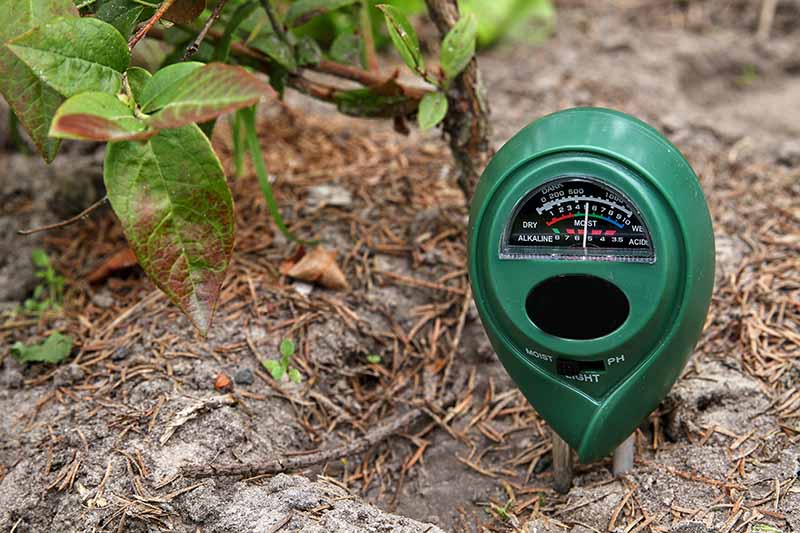
Each time you fertilize the plants or it rains, the pH is going to start creeping up again. To prevent this, use a fertilizer designed for use in acidic soils.
Down to Earth Acid Mix is perfect because it contains cottonseed meal to gently and slightly reduce the pH each time you add it.
I like Down to Earth because it comes in compostable boxes and I’ve had good experiences with it every time I’ve used it.
If you’d like to bring some home, visit Arbico Organics to nab a one-, five-, or 15-pound container.
Bring On the Blueberries
Few of us have the perfect soil for blueberries.
Even in my neck of the woods where it is naturally acidic, it still isn’t acidic enough to make blueberries truly happy. But don’t let that stop you from growing them.
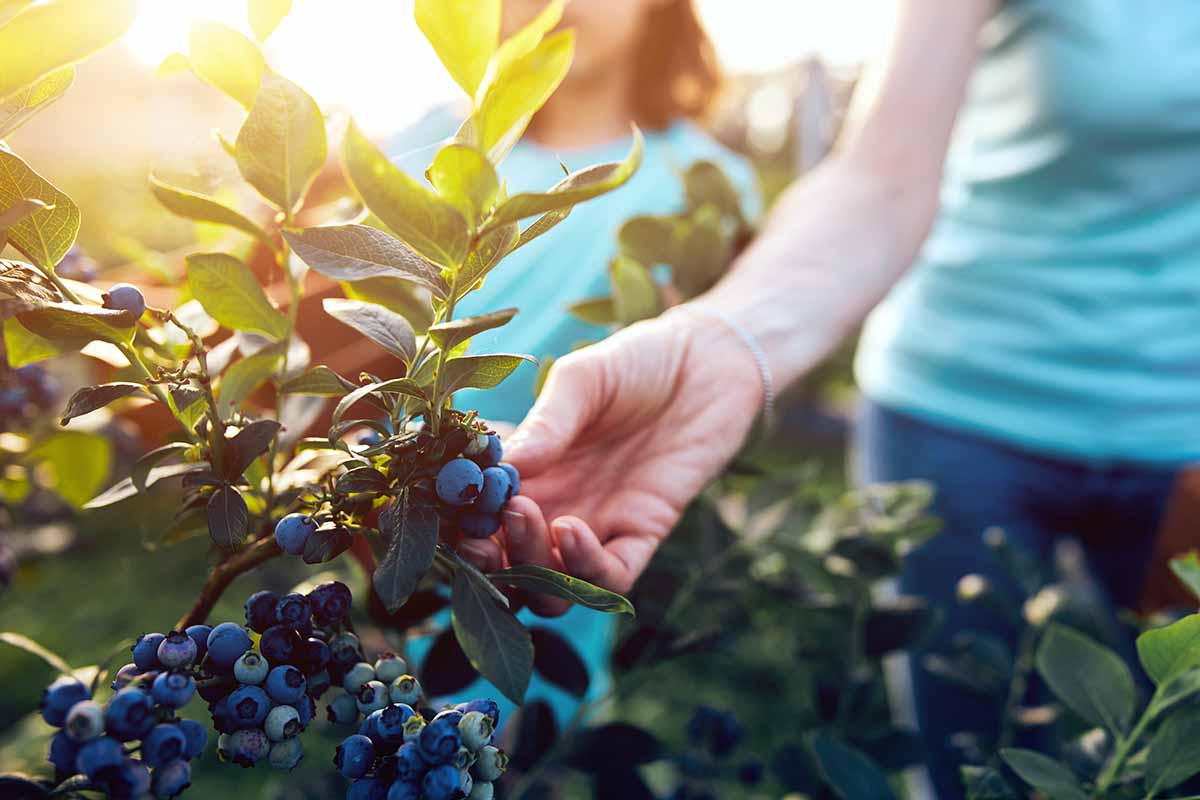
A fresh blueberry straight off the bush is a thing of joy. It’s worth a little extra effort, right?
What kind of blueberries are you growing? Let us know what you’re going to go with.
If you’re looking for more information on how to grow blueberries, we have a few more guides that you might find handy. Check these out next:
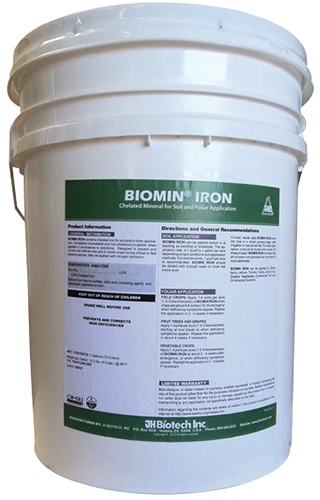
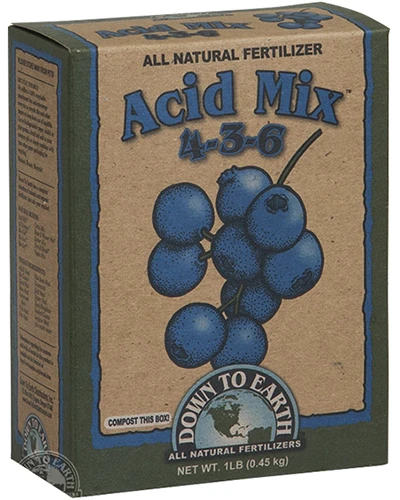
Author has no experience gardening, and no idea what she is talking about. This “article” is just a compilation of sales brochure writings from a few different companies marketing departments. You can amend ( add to) your soil, you can’t change your climate. Nonsense articles like this by half-wit journalists with no knowledge of what they’re talking about is why my neighbor is trying to grow blueberries. We live in Texas in an arid region that gets about 12 inches of rain per year and has very alkaline soil. The purposes of articles like these is to sell products to… Read more »
Did you actually read the thing? Or do you just want to pretend you are on Reddit and manufacture some rage? Maybe this guide “isn’t for you.” She said what you said and that if one was determined to grow outside of their native soils, raised beds were about the only option. Other suggestions are for nudging borderline soil. Like the soil in the Midwest and upper south of the US. No one said a damn thing about trying to grow blueberries in San Antonio. For anyone else reading. No, you cannot grow blueberries (very well) in Lubbock, TX or… Read more »
I hardly got any blueberries on my 18 plants this season after getting plenty the last two seasons, why?
Hi Pat, can you give me a bit more information? Did you see lots of flowers this year? Or did your plants fail to flower? Are you seeing any other symptoms on your plants, such as leaf drop or yellowing, or any fungal spores on the leaves? Let me know, and I can help.